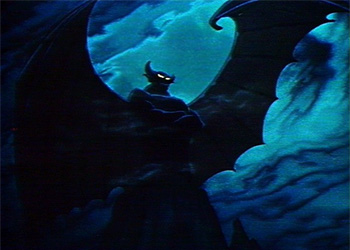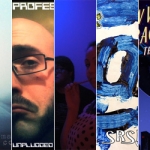
In the last Geek’s Guide, we took a look at the greatest piece of scary movie music, Bach’s Toccata and Fugue in D Minor. Fifty years after Bach’s death, the early 19th century ushered in what is known as the Romantic period in art, literature, and music. During the Romantic period, emotion was king, and this is especially reflected in the way composers used music during the time period. Whereas Bach’s piece was appropriated by later audiences and put into the context of scary music, some Romantic composers wrote pieces that were intended to be scary to the listener. In this Geek’s Guide, we will take a look at three chilling pieces that continue to be popular today.
Franz Schubert was an Austrian composer who was born in Vienna in 1797 and died in 1828. Despite his death at such an early age, he managed to produce a large body of work, including nine symphonies, many piano pieces, chamber works such as string quartets, and over 600 lieder, or songs. Schubert’s lieder were not ordinary settings of poetic texts to music because the piano accompaniment is often as important to the work as the melody that the soloist is singing. Schubert frequently uses the accompaniment to show the mood of the text and illustrate specific things mentioned in the text. “Der Erlkonig” is probably Schubert’s most famous lied, and it also fits perfectly with our theme. Composed in 1815, it is a setting of a poem by the German Romantic writer Goethe, which was based on Danish folklore. It describes the journey of a father with his son, who is sick and near death. The son repeatedly tells his father that he sees and hears the Erl-King, who is trying to entice the boy to come away with him, but the father doesn’t believe him. Throughout, the piano part helps us visualize the dark, stormy night and the frantic hoofbeats of the horse as the father hurries home. Take a listen to this interpretation by Dietrich Fischer-Dieskau, a German soloist who was well-known in the mid-20th century, complete with English subtitles for the German text:
Later in the 19th century, tone poems became a popular form for Romantic composers to use. A tone poem is usually an orchestral work that uses music and sound to tell a specific story. Although a tone poem may be based on an actual poem or text, there are no singers to tell the story with words, only the sounds of the instruments. Russian composer Modest Mussorgsky (1839-1881) wrote a tone poem called St. John’s Night on the Bare Mountain, based on Russian or Ukrainian folklore about a “witches’ sabbath.” The composer himself described the plot in a letter in this way:
“So far as my memory doesn’t deceive me, the witches used to gather on this mountain, gossip, play tricks and await their chief — Satan. On his arrival they, i.e. the witches, formed a circle round the throne on which he sat, in the form of a kid, and sang his praise. When Satan was worked up into a sufficient passion by the witches’ praises, he gave the command for the sabbath, in which he chose for himself the witches who caught his fancy. –So this is what I’ve done. At the head of my score I’ve put its content: 1. Assembly of the witches, their talk and gossip; 2. Satan’s journey; 3. Obscene praises of Satan; and 4. Sabbath… The form and character of the composition are both Russian and original”
Mussorgsky’s original version from 1867 was never performed in his lifetime and is hardly known today. Rather, the version most often played by orchestras now is an arrangement made by Mussorgsky’s friend and fellow Russian composer, Nikolai Rimsky-Korsakov. The one most people can tell you about, however, can be attributed to conductor Leopold Stokowski, who made the famous arrangement for Disney’s 1940 film, Fantasia:
In 1872, French composer Camille Saint-Saens (1835-1921) wrote a song for voice and piano based on a poem by Henri Cazalis called “Danse Macabre.” It tells the tale of Death, who takes up his violin on Halloween night and plays, causing the skeletons to rise from their graves and dance (among other things) until the rooster crows at dawn and the skeletons return to their graves. (You can read an English translation of the poem on the Wikipedia page for Danse macabre.) Two years later, Saint-Saens rearranged the piece and turned it into a tone poem for orchestra. The story is very easy to follow through the musical cues and motives — be sure to listen for the clock striking midnight at the beginning, Death’s violin motif, the xylophone motif representing clicking bones, and the rooster, represented by an oboe.
I hope you have enjoyed this trip through a bit of Halloween musical mayhem! What music will you choose to accompany your spooky celebrations?






